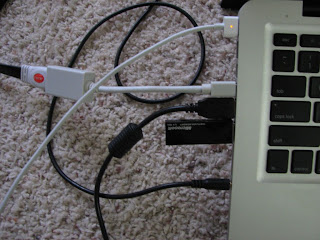file.txt contains:
white
green
blue
foo
red
black
bar
yellow
Hope this helps!!! Read more ...
sed '/foo/,/bar/{d;}' file.txt
Output:white
green
blue
red
black
yellow
my views
file.txt contains:
white
green
blue
foo
red
black
bar
yellow
Hope this helps!!! Read more ...
sed '/foo/,/bar/{d;}' file.txt
Output:white
green
blue
red
black
yellow
I had a situation where I had to find and replace in files with out creating new files and renaming them back, so after some research on Google I came up with this:
find . type –f | xargs perl –pi –e 's/foo/bar/g'
find . -type f | xargs grep foo
-i for ignore case Read more ...
find /usr/home/akt -type f | xargs grep -i foo
SELECT HASHAMP ( );
SELECT HASHAMP ( ) + 1;



filename.out contains:
abc def ;
ghi jkl ;
asd fgh ;
awk '{print $2 "="}' < filename.out
Output:
def=
jkl=
fgh=
Space Terminology
| Perm | Spool | Temp | |
| Max | The maximum number of bytes available for table, index and permanent journal storage in a database or user | A value used to limit the number of bytes the system will consume to create spool files for a user | A value used to limit the number of bytes the system will use to store data for global temporary tables for a user |
| Current | The total number of bytes in use to store the tables, subtables, and permanent journals contained in the database or user | The number of bytes currently in use for running transactions | The number of bytes in use for global temporary tables |
| Peak | The largest number of bytes actually used to store data in this user since the value was last reset | The maximum number of bytes used by a transaction run for this user since the value was last reset | The maximum number of bytes used by global temporary tables for a user since the value was last reset |
Space Limits:
Example of space terminology:
Lets say we have a user HR with MaxPerm space 25 MB, MaxSpool space 50 MB and MaxTemp space 30 MB. Now HR creates two users HR01 and HR02 with 6 MB, 4 MB MaxPerm space respectively and assigning 35 MB MaxSpool space to HR01, as there is spool assigned to HR02, it spool space defaults to its immediate parent MaxSpool space i.e. 50 MB. Now HR is left with 15 MB of MaxPerm space. Later HR drops HR01, HR MaxPerm space increases to 21 MB, since it regains Perm space fro HR01. As there is no MaxTemp space assigned to HR01 and HR02 it is defaulted to their immediate parent to 30 MB.
Giving one user to another:
A set of common parameters that can be applied to a group of users.
Now you have a question in your mind, what set of common parameters?
Example: You have a group of 1000 users that are assigned same temporary space, same spool space, same account ID and same default database, if you have to change a single parameter for 1000 users is time consuming. This can be over come by creating a profile with the assigned parameters and assigning that profile to the users. This eases the user management
Implementing profiles:
Initially only DBC has CREATE PROFILE and DROP PROFILE access rights. These can given to DBA's by:
GRANT CREATE PROFILE, DROP PROFILE TO DBA WITH GRANT OPTION;
In the following section we will see, how to create a PROFILE and assigning a user to a profile:
Create PROFILE statement:
CREATE PROFILE [profile_name] AS ACCOUNT = [account_id/null], DEFAULT DATABASE = [db_name/null], SPOOL = [bytes/null], TEMPORARY = [bytes/null], PASSWORD = [password];
CREATE PROFILE Emp AS ACCOUNT = '$H2$acct01&H', DEFAULT DATABASE = 'ABC', SPOOL = '20000000', TEMPORARY = '100000000'...;
Assigning PROFILE to the user: It can be assigned using CREATE USER and MODIFY USER
CREATE USER Emp01 AS..., PROFILE = Emp;
MODIFY USER Emp02 AS PROFILE = Emp;
To remove profile for a USER:
MODIFY USER Emp02 AS PROFILE=NULL;
Profile definitions are applied to all users, overriding specifications at system or user level. All members inherit changed profile parameters. The impact on current users is as follows:
Order of precedence of parameters:
Source: Teradata Manuals
Read more ...A correlated subquery (CS) is a subquery whose outer query results are processed a row at a time, against the subquery result. The subquery result is computed for each row processed.
Example:
1. Employee with highest salary in each department
SELECT L_Na,Sal, D_No
FROM test.employee ee
WHERE Sal = (SELECT MAX (Sal)
FROM test.employee em
WHERE ee.D_No=em.D_No);
Answer Set:
| Last_Name | Salary_Amount | Dept_No |
| stifler | 60000 | 50 |
| pitt | 70000 | 10 |
| young | 60000 | 50 |
| jones | 60000 | 30 |
| paul | 70000 | 70 |
| penn | 60000 | 60 |
| white | 75000 | 90 |
| nelson | 70000 | 80 |
| pitt | 45000 | 100 |
| lucas | 75000 | 20 |
| phips | 65000 | 40 |
2. Employees whose salary is greater than the department average salary
SELECT L_Na, Sal, D_No
FROM test.employee ee
WHERE Sal > (SELECT AVG (Sal)
FROM test.employee em
WHERE ee.D_No= em.D_No);
Answer Set:
| Last_Name | Salary_Amount | Dept_No |
| paul | 70000 | 70 |
| phips | 65000 | 40 |
| shook | 65000 | 10 |
| pitt | 70000 | 10 |
| jones | 60000 | 30 |
| lucas | 75000 | 20 |
| wall | 65000 | 10 |
Concatenation allows to retrieve data correlated to the MIN/MAX function in a single pass
Example:
1. Employees with highest salary in each department
This can be written as using correlated subquery
SELECT D_No, Sal, L_Na, F_Na
FROM test.employee ee
WHERE Sal IN
(SELECT MAX (Sal)
FROM test.employee em
WHERE ee.D_No=em.D_No
GROUP BY D_No)
ORDER BY D_No;
Answer Set:
| Dept_No | Salary_Amount | Last_Name | First_Name |
| 10 | 70000 | pitt | arun |
| 20 | 75000 | lucas | frank |
| 30 | 60000 | jones | indiana |
| 40 | 65000 | phips | carla |
| 50 | 60000 | stifler | tom |
| 50 | 60000 | young | nikie |
| 60 | 60000 | penn | arun |
| 70 | 70000 | paul | ak |
| 80 | 70000 | nelson | julie |
| 90 | 75000 | white | sam |
| 100 | 45000 | pitt | mark |
It can also be written as
SELECT D_No,
MAX(Sal || ' ' || L_Na || ',' ||F_Na)
FROM test.employee
GROUP BY D_No
ORDER BY D_No ;
Answer Set:
| Dept_No | Maximum(((((Salary_Amount||' ')||Last_Name)||',')||First_Nam |
| 10 | 70000 pitt ,arun |
| 20 | 75000 lucas ,frank |
| 30 | 60000 jones ,indiana |
| 40 | 65000 phips ,carla |
| 50 | 60000 young ,nikie |
| 60 | 60000 penn ,arun |
| 70 | 70000 paul ,ak |
| 80 | 70000 nelson ,julie |
| 90 | 75000 white ,sam |
| 100 | 45000 pitt ,mark |
Did you observe the two answer sets? Can you tell the difference and how to overcome it? Please leave your answers in comments.
Read more ...Create user is used to add a new user to the system. As discussed earlier user is similar to database except that a user can logon with a password and run queries. Below is the create user SQL
CREATE USER [user_name] FROM [dbname] AS
PERM = [bytes]
PASSWORD = [password/null]
STARTUP = [string]
TEMPORARY = [bytes]
DEFAULT DATABASE = [dbname]
COLLATION = [collation_sequence]
ACCOUNT = [account_id]
[NO] FALLBACK
[NO/DUAL] BEFORE JOURNAL
[NO/DUAL/LOCAL/NOTLOCAL] AFTER JOURNAL
DEFAULT JOURNAL TABLE = [name].[table_name];
SQL with parameter:
CREATE USER testuser FROM DBC
AS
PASSWORD=user1
PERM=2000000
SPOOL=5000000
TEMPORARY=0
STARTUP='SET SESSION ANSI'
ACCOUNT='$LUSER'
DEFAULT DATABASE=test
COLLATION= HOST
NO FALLBACK
NO BEFORE JOURNAL
NO AFTER JOURNAL;
Source: Teradata Manuals
Read more ...